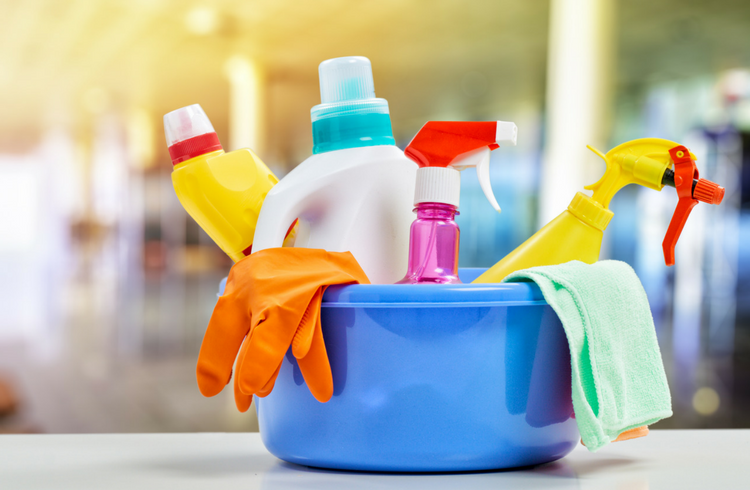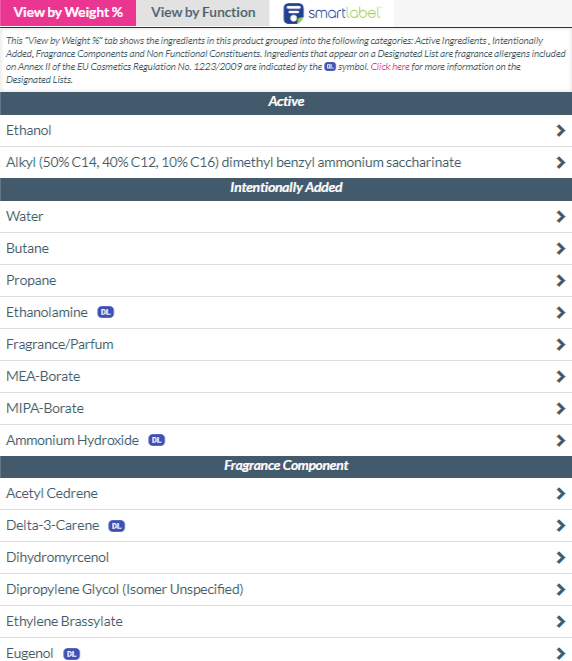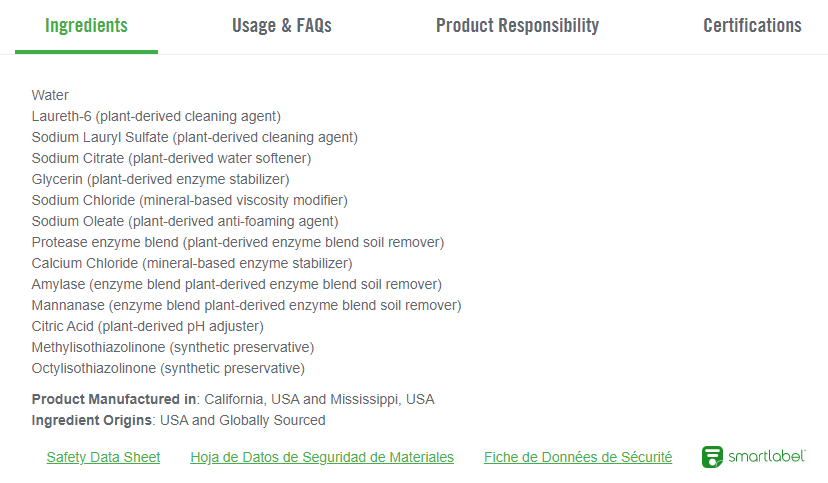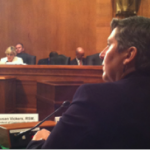By BCPP Senior Policy Strategist Nancy Buermeyer
In the face of the COVID-19 crisis, cleaning products have been flying off the shelves and into our homes worldwide. While protection from coronavirus is a primary concern, consumers also want to know if there are adverse health effects associated with the ingredients in the products we are bringing into our homes to clean and disinfect.

Knowing what’s in our cleaning products is essential for making informed choices about which products we do, and don’t, want to use. Before 2020, there was no legal requirement to label ingredients in household cleaners, including potential carcinogens, or ingredients linked to reproductive harm, potential allergic reactions or other harmful health effects. Fortunately, because of our work, consumers will finally know what’s inside their cleaning products!
CA Cleaning Product Right to Know law requires disclosing ingredients online
As of January 1, 2020, cleaning product manufacturers must post product ingredients on their websites, a result of a groundbreaking California law. BCPP sponsored the CA Cleaning Products Right to Know Act of 2017 (SB 258) along with the Environmental Working Group, Natural Resources Defense Council, and Women’s Voices for the Earth. Together, we led on every aspect of the legislative process, including the extensive and collaborative negotiations between industry and advocates that resulted in broad support and ultimate passage of this internationally historic law.
Example of Online Ingredient Listing
As of January 1, 2020, a list of ingredients in cleaning products, including any hazardous fragrance ingredients, can be found on product websites, such as this one for Lysol Disinfectant Spray. RB, the maker of Lysol, was closely involved in the industry/NGO negotiations for the CA bill. The law requires that harmful ingredients that appear on 23 ‘designated lists’ of hazardous chemicals be identified, in this example by the “DL” icon. In the case of this RB product, a drop-down menu provides additional information.
The law breaks new ground in several ways. It:
- Requires ingredient disclosure for cleaning products sold in CA, including disinfectants, for the first time. This is the only requirement of its kind anywhere in the world.
- Requires disclosure of fragrance ingredients down to a concentration of 100 parts per million and the full disclosure of all hazardous fragrance ingredients. No other product category, including beauty and personal care products, currently discloses fragrance chemicals (but BCPP is working to change that).
- Prohibits trade secret claims for ingredients linked to harm to human health or the environment.
- Requires disclosure of toxic contaminants, such as the carcinogen 1,4-dioxane, that aren’t intentionally added to a cleaning product but end up in products for a myriad of reasons (i.e. the manufacturing process, contamination of raw materials, chemicals that combine and create (or release) other chemicals, etc.); the first time contaminants have been disclosed on product websites.
When the Cleaning Product Right to Know law goes into effect
The ingredient disclosure requirements in the CA law will gradually expand as the law is fully implemented. Starting in January 2020, cleaning products sold in California are now required to list ingredients online. The size of the CA market (virtually every product is sold here) means this law will likely benefit most Americans.
And website disclosure is only the first step. As of January 2021, cleaning product labels will list ingredients as well, allowing consumers to review this information in stores. On-label disclosure is especially important for people without access to smart phones, computers, or the internet.
Finally, cleaning product companies must start disclosing California Prop 65 ingredients linked to cancer and reproductive harm in 2023. Major manufacturers negotiated for this extra time to reformulate their products to remove these worst of the worst chemicals. The law is clearly accomplishing one of the primary goals of ingredient disclosure: pressuring companies to remove potentially hazardous chemicals.
Business leaders in cleaning product ingredient labeling transparency
While this is the first time ingredient labeling is legally required for cleaning products, some companies have been disclosing ingredients for years. As one example, BCPP’s partner Seventh Generation has been an industry leader in disclosing the ingredients in their cleaning products. Not only do they walk the talk, Seventh Generation was a critical and active partner in passing the Cleaning Products Right to Know Act, which levels the playing field among all companies selling products in California.
Seventh Generation online labeling
In addition to online disclosure like this, full ingredient lists on Seventh Generation’s products such as this laundry detergent have been available on product labels since 2007.
The future of cleaning product ingredient transparency
This new transparency will improve the safety of cleaning products for everyone:
- Workers will know what chemicals they are being exposed to on the job, allowing them to advocate for safer alternatives.
- Consumers will have the power to make better choices for themselves and their families.
- Watchdog groups like BCPP will be able to review ingredients and educate companies and consumers alike on chemicals to avoid.
- And if the market doesn’t correct the problem, the information will provide government regulators a tool to prioritize restricting or banning the most hazardous ingredients in cleaning products.
Of course, disclosure of ingredients is only the first step in our mission to remove toxic chemicals linked to breast cancer from cleaning products and other household items, but it is a necessary first step. BCPP will use this information to push legislators and regulators to ban the use of these harmful chemicals to better protect public health.
We hope that you and your family are in good health and that this information will help you create a cleaner and safer home.
Resources
Links to resources to help you navigate this new world, keeping yourself and your family safe from both viruses and toxic chemicals:
- Women’s Voices for the Earth: Safer Disinfecting at home in the times of Coronavirus
- Learning Disabilities Association of America: Safer Disinfectants Against Coronavirus
- Environmental Working Group: 16 Effective and Safe Products to Guard Against Coronaviurs
- Healthy Schools Network: On the Pandemic Front Line: Children and Schools
- Toxics Use Reduction Institute: COVID-19: Safely Clean & Disinfect
- of Washington, School of Public Health: Fact Sheet on Cleaning and Sanitizing
- Western States Pediatric Environmental Health Specialty Unit – AAP: Safer Disinfectant Use During the COVID-19 Pandemic
- EPA’s Safer Choice Program certifies products with less hazardous ingredients
- Center for Disease Control Disinfecting and Cleaning Guidance
Take Action for Ingredient Transparency
Help reduce and eliminate chemicals linked to breast cancer through our action center.



